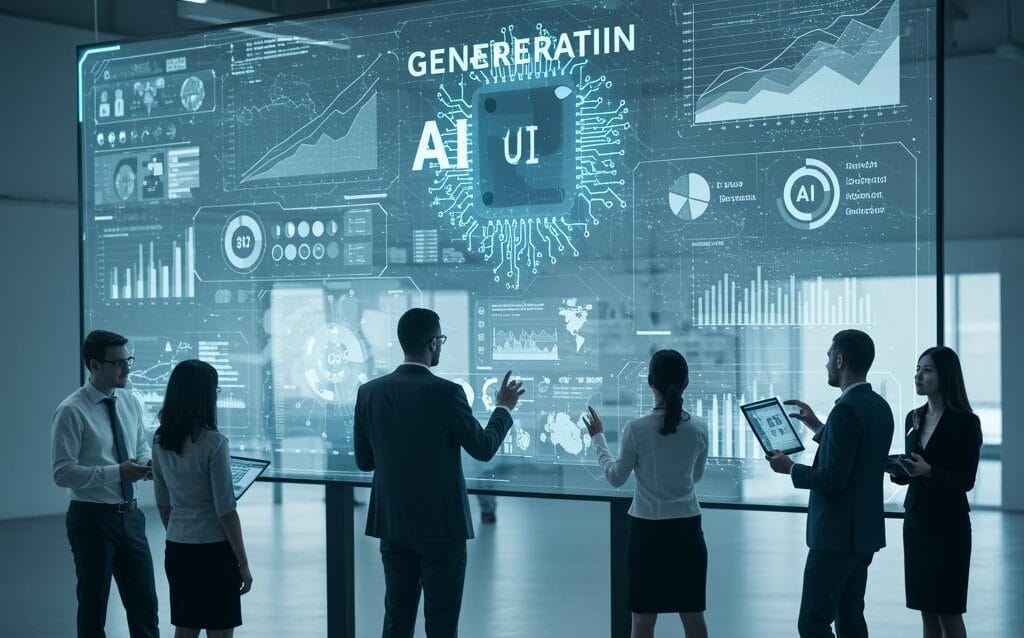Generative AI for Business: Practical Applications & Use Cases
Practical Applications of Generative AI for Businesses
Generative AI is rapidly transforming the business landscape, moving beyond theoretical possibilities to offer tangible solutions for a wide array of challenges. These AI models, capable of creating new content from existing data, are no longer just a futuristic concept; they’re a powerful tool available to businesses of all sizes. This blog post explores some practical applications of generative AI that can drive efficiency, innovation, and growth.
Content Creation and Marketing
Generating Engaging Marketing Copy
Struggling to craft compelling marketing copy that resonates with your target audience? Generative AI can help. These models can generate various types of content, including:
- Website copy: Create persuasive headlines, product descriptions, and landing page content.
- Social media posts: Develop engaging posts tailored to different platforms, optimizing for reach and engagement.
- Email marketing campaigns: Automate the creation of personalized email subject lines and body content.
- Ad copy: Generate multiple ad variations for A/B testing, maximizing click-through rates and conversions.
The key is to provide the AI with clear instructions and relevant data, such as target audience demographics, brand voice guidelines, and desired call-to-actions. Remember to always review and edit the generated content to ensure accuracy and alignment with your brand.
Creating Visual Content
Generative AI isn’t limited to text. It can also produce stunning visuals, including:
- Product mockups: Visualize new product designs without expensive prototyping.
- Marketing images: Generate unique and eye-catching images for your website and social media.
- Illustrations: Create custom illustrations for blog posts, presentations, and marketing materials.
Tools like DALL-E 2 and Midjourney allow you to create images from text prompts, opening up a world of creative possibilities. This can significantly reduce reliance on stock photos and expensive graphic designers, especially for smaller businesses.
Customer Service and Support
AI-Powered Chatbots
Generative AI is revolutionizing customer service with more intelligent and responsive chatbots. These chatbots can:
- Understand and respond to complex queries: Move beyond simple keyword-based responses to truly understand customer intent.
- Provide personalized support: Offer tailored recommendations and solutions based on customer history and preferences.
- Handle a high volume of inquiries: Scale your customer service operations without hiring additional staff.
By training the AI on your company’s knowledge base and customer interaction data, you can create a chatbot that provides accurate and helpful support, improving customer satisfaction and reducing support costs.
Automated Email Responses
Generative AI can also automate email responses, freeing up your customer service team to focus on more complex issues. It can:
- Generate responses to common inquiries: Automatically answer frequently asked questions, such as order status updates or return policies.
- Triage incoming emails: Categorize and prioritize emails based on urgency and subject matter.
- Summarize lengthy email threads: Quickly understand the context of a conversation without reading through the entire thread.
This automation can significantly reduce response times and improve the overall efficiency of your customer service operations. Ensure that the generated responses are reviewed for accuracy and tone before being sent to customers.
Product Development and Innovation
Generating Design Ideas
Generative AI can be a powerful tool for brainstorming and generating new product design ideas. By inputting specific parameters and constraints, you can:
- Explore a wide range of design options: Generate hundreds or even thousands of design variations in a fraction of the time it would take a human designer.
- Identify innovative solutions: Discover unexpected and unconventional design solutions that you might not have considered otherwise.
- Optimize designs for specific performance criteria: Generate designs that meet specific requirements, such as weight, strength, or cost.
This can significantly accelerate the product development process and lead to more innovative and competitive products.
Code Generation and Automation
Generative AI is increasingly being used to automate software development tasks. It can:
- Generate code from natural language descriptions: Describe the functionality you want, and the AI will generate the corresponding code.
- Automate repetitive coding tasks: Generate boilerplate code, unit tests, and documentation.
- Debug code: Identify and fix errors in existing code.
This can significantly improve developer productivity and reduce the time and cost of software development. Tools like GitHub Copilot are already helping developers write code faster and more efficiently.
Conclusion
Generative AI offers a wealth of opportunities for businesses to improve efficiency, drive innovation, and enhance customer experiences. From content creation and customer service to product development and software engineering, the applications are vast and growing rapidly. While it’s important to remember that generative AI is a tool, and human oversight is still crucial, embracing these technologies can give your business a significant competitive edge. By carefully exploring the possibilities and experimenting with different applications, you can unlock the transformative potential of generative AI and drive sustainable growth.

